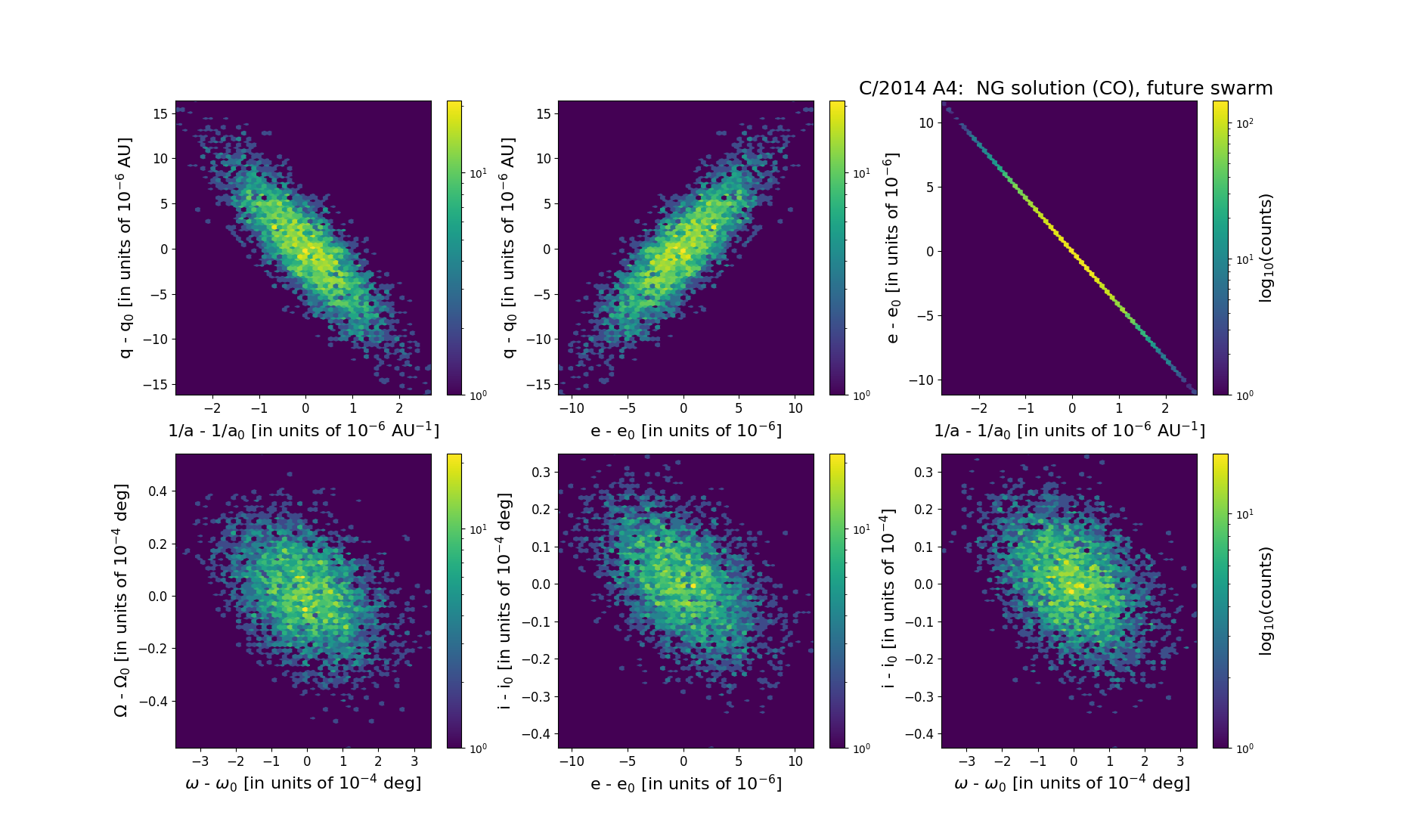C/2014 A4 SONEAR
more info
Comet C/2014 A4 was discovered on 12 January 2014 with Southern Observatory for Near Earth Research (Oliveira, Brazil), that is about 8 months before its perihelion passage. This comet was observed during five oppositions until 17 September 2017.
Comet had its closest approach to the Earth on 19 October 2015 (3.203 au), about 1.5 month after its perihelion passage.
Solutions given here are based on data spanning over 3.68 yr in a range of heliocentric distances: 6.40 au – 4.180 au (perihelion) – 7.21 au.
This comet suffers small planetary perturbations during its passage through the planetary system; these perturbations lead to a more tight future orbit (see future barycentric orbits).
Comet had its closest approach to the Earth on 19 October 2015 (3.203 au), about 1.5 month after its perihelion passage.
Solutions given here are based on data spanning over 3.68 yr in a range of heliocentric distances: 6.40 au – 4.180 au (perihelion) – 7.21 au.
This comet suffers small planetary perturbations during its passage through the planetary system; these perturbations lead to a more tight future orbit (see future barycentric orbits).
| solution description | ||
|---|---|---|
| number of observations | 2825 | |
| data interval | 2014 01 12 – 2017 09 17 | |
| data type | perihelion within the observation arc (FULL) | |
| data arc selection | entire data set (STD) | |
| range of heliocentric distances | 6.4 au – 4.18 au (perihelion) – 7.21 au | |
| type of model of motion | NC - non-gravitational orbits for symmetric CO-g(r)-like function | |
| data weighting | YES | |
| number of residuals | 5557 | |
| RMS [arcseconds] | 0.41 | |
| orbit quality class | 1a+ | |
| orbital elements (barycentric ecliptic J2000) | ||
|---|---|---|
| Epoch | 2322 10 16 | |
| perihelion date | 2015 09 05.56729979 | ± 0.00064483 |
| perihelion distance [au] | 4.18295574 | ± 0.00000474 |
| eccentricity | 0.99881610 | ± 0.00000342 |
| argument of perihelion [°] | 356.716893 | ± 0.000103 |
| ascending node [°] | 29.704277 | ± 0.000014 |
| inclination [°] | 121.334428 | ± 0.000011 |
| reciprocal semi-major axis [10-6 au-1] | 283.03 | ± 0.82 |
| file containing 5001 VCs swarm |
|---|
| 2014a4c5.bpl |

